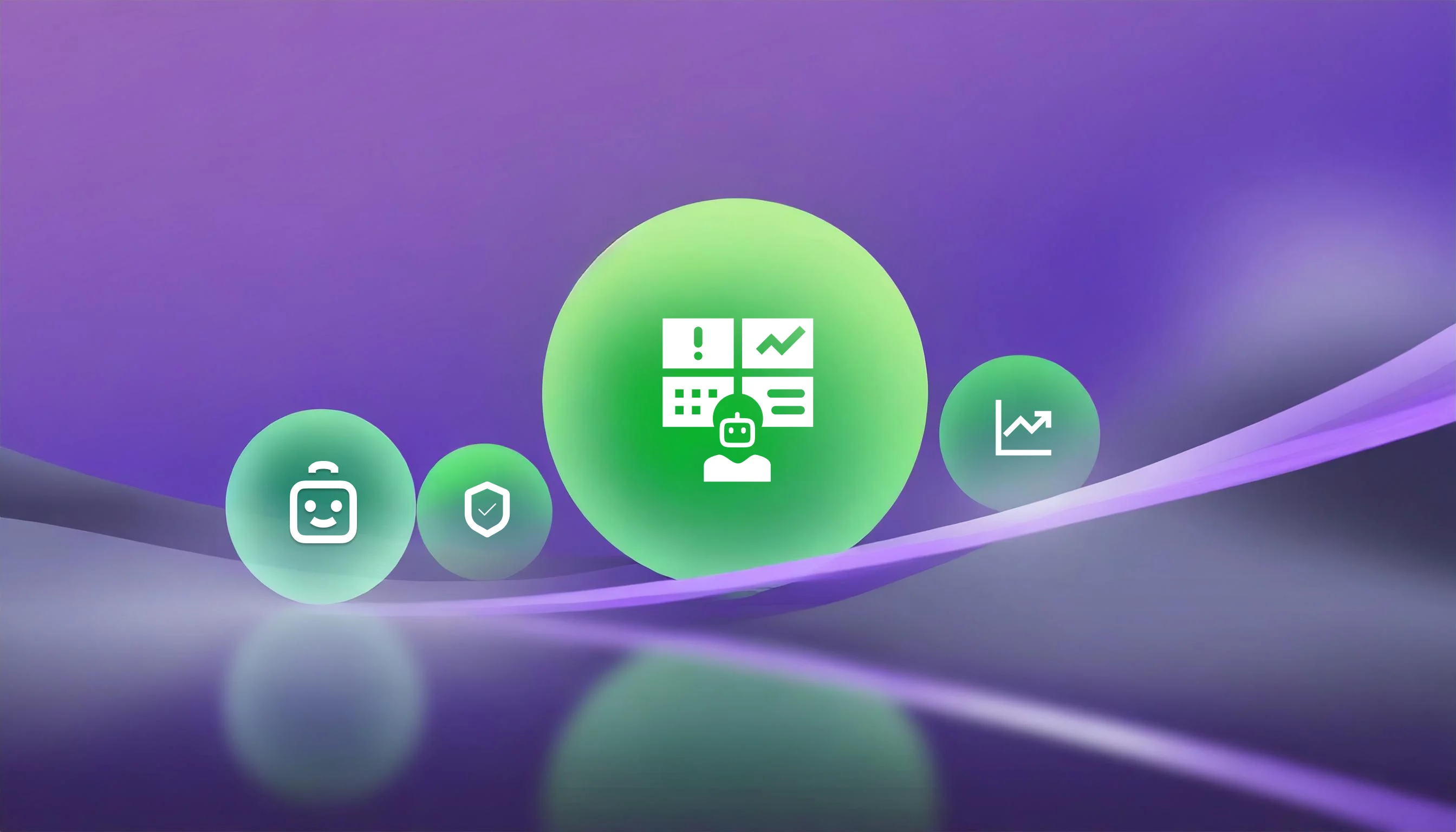
Luis Minvielle
May 23, 2025
Businesses will need AI monitoring tools because AI agents will probably be used in almost every line of business. For example, banks could use them to handle account questions. Retailers could rely on them to help customers track orders or find products. Healthcare companies might use them to answer basic patient queries. Even HR teams could use them to guide employees through internal tools. Some companies have already adopted these workflows.
But for all this adoption, AI agents still fall short in many areas. They get confused easily, repeat the same answers, or give out information that doesn't help. A Forrester study showed that 50% of customers often feel frustrated when dealing with chatbots. Over half said they couldn't find a solution to their problems, and many struggled to connect with a real person after hitting a dead end.

These numbers make one thing clear: AI agents still have a lot to learn. And if you're part of a Customer Care team or responsible for rolling out AI in your company, you know the pressure. The tools are in place, but teaching these agents how to act in real conversations isn’t easy.
To do that well, teams need a way to follow what these agents are doing once they go live. And that’s what AI monitoring tools are built for. They help companies keep track of how their agents behave in practice, and fix issues before they grow. You don’t need a huge machine learning team to get started. You just need the right setup.
In this article, we’ll look at three of the best AI monitoring tools in 2025: what they do, who they’re built for, and how they help teams keep their AI agents on track.
What is AI monitoring?
AI monitoring is the process of checking how an AI agent behaves on an ongoing basis. It helps make sure the system gives accurate answers, follows business rules, and stays within its role over time. Testing checks how the agent behaves in a controlled setting. Monitoring follows what happens once the agent is live, during real interactions. It looks at how the agent responds across different users, prompts, and situations, even as it picks up new data or faces unexpected questions.
Monitoring helps catch AI failures early. For example, a virtual HR assistant might start giving out personal medical advice instead of directing employees to the right support channels. A retail chatbot might offer discounts that don’t exist or promise next-day delivery on out-of-stock items. A healthcare support bot might respond to symptom-related questions with answers that sound confident but are medically wrong. These issues can go unnoticed unless someone is watching closely.
That’s what monitoring is for. It gives companies a way to spot these problems as they develop—before customers are affected, or compliance issues come up.
Not all AI monitoring tools look at real-world behavior
Some AI monitoring tools focus on system-level performance, like latency, token usage, or drift. That’s useful for infrastructure and compliance. But it doesn’t tell you how the agent behaves when a customer asks a sensitive or confusing question. If your job is to make sure the AI doesn’t go off-script with a real user, you need a tool that tracks how it responds in practice, and not just how it runs.
The 3 best monitoring customer-facing AI tools in 2025
There are many platforms that offer different types of AI monitoring, but not all of them focus on the same things. Here are three AI monitoring tools that stand out in 2025:
Genezio
Genezio offers an AI testing and monitoring platform built for companies that rely on AI agents to handle customer service, healthcare queries, or banking tasks. While some tools focus on latency or usage, Genezio checks if the AI agent is giving the right answer. And if it isn’t, the system flags it.

Genezio stands out for one specific feature: it lets you simulate real-world conversations to test how your AI agent reacts. For example, you can see what happens if a customer tries to jailbreak your chatbot or if the agent drifts into risky advice. Genezio helps teams catch this kind of behavior before deployment. And once the agent goes live, Genezio keeps monitoring it.
The platform is especially useful for companies without a dedicated AI team. You don’t need to build your own test environment. You can paste in a URL that links to your AI agent, and Genezio takes it from there. Reports are clear and easy to understand, which means Customer Care Experts and IT leads can work from the same page.
Arize
Arize offers observability tools for teams working with large language models (LLMs). One of its tools, Phoenix, is an open-source platform designed for evaluating and debugging AI applications. It helps technical teams trace how inputs move through a system and identify where things may go wrong. This can be useful if you’re in charge of model performance or infrastructure. You can also monitor drift and surface-level anomalies.

However, Arize is mostly designed for technical users. If you’re leading a Customer Care team or responsible for the actual responses of the AI agent, it might take extra time to pull out relevant observations from the dashboard. Arize doesn't provide simulation environments for user-agent interactions like Genezio does, so you might need another tool to fill that gap.
Fiddler
If a banking assistant gives different loan advice depending on someone’s ZIP code or job title, you want to know why. That’s the kind of issue Fiddler is built to catch. It focuses on explainability and monitoring at the model level to help teams understand how decisions are made. One of its tools, Fiddler Auditor, checks for bias, drift, and fairness across different inputs, which is especially useful in regulated industries like banking or insurance.

That said, Fiddler focuses more on the model itself than the end-user experience. So, it doesn’t give you a way to test how an AI agent talks to customers in real conversations. And unless you have a machine learning background, the interface might take some effort to get used to. Pricing isn’t always transparent, and it’s not clear how much support is available for non-technical teams.
Why Genezio is the right solution for AI monitoring
Genezio is built for teams who work directly with customers. If you’re a Customer Care expert or part of an IT team that oversees how AI agents interact with real users, Genezio gives you the tools to monitor what actually matters: what the agent says, how it behaves, and when the system starts to get off track.
Unlike system-level platforms, Genezio focuses on real-world behavior. It goes beyond performance metrics and shows how your AI responds to tricky, unexpected, or sensitive questions from real users. That’s the kind of visibility you need if your AI agent is handling support tickets, banking advice, or healthcare queries.
You can run one-time tests or set up ongoing monitoring to keep things on track over time. If something changes in how the agent responds, Genezio flags it. You get clear reports that show what happened, why it matters, and what to do next.
For teams looking for professional, simple AI monitoring tools, Genezio gives you a full environment to check, test, and track your AI agent’s behavior before and after launch.
Ready to take control of your AI agents? Start monitoring real-world performance with Genezio — no setup, no hassle. Try Genezio for free or book a report today.
Article contents
Subscribe to our newsletter
DeployApps is a serverless platform for building full-stack web and mobile applications in a scalable and cost-efficient way.
Related articles
More from AI
Quality Monitoring Software: How To Make Sure AI Agents Benefit Support and Customers
Luis Minvielle
May 23, 2025
The Best AI Agent Tools for Building and Deploying Autonomous AI Systems
Luis Minvielle
Mar 17, 2025





